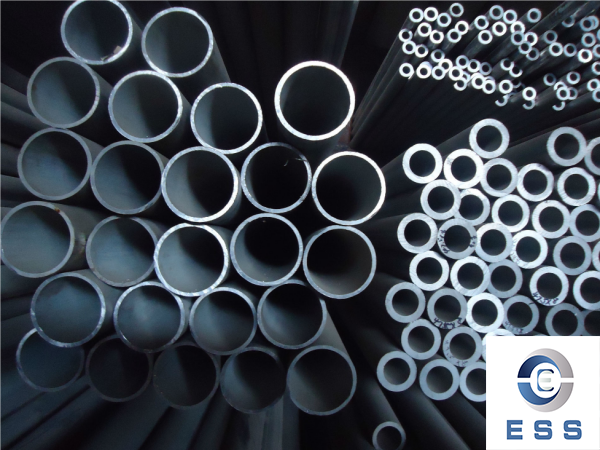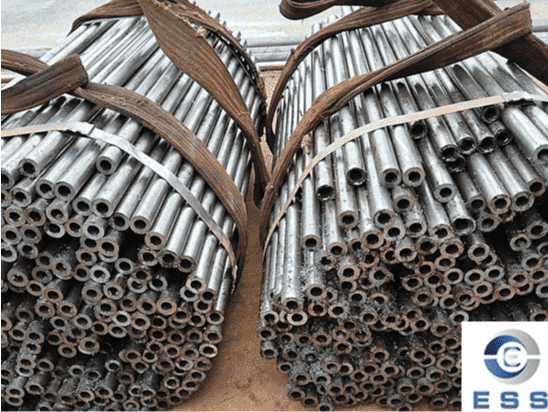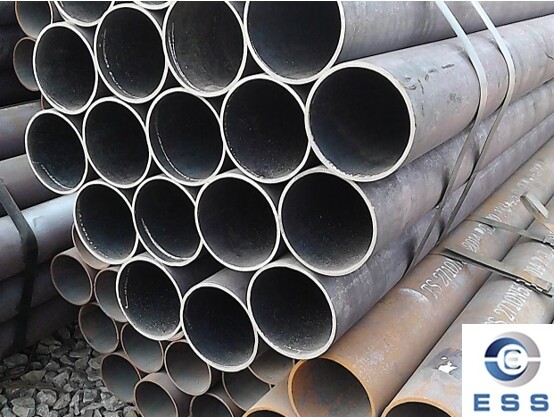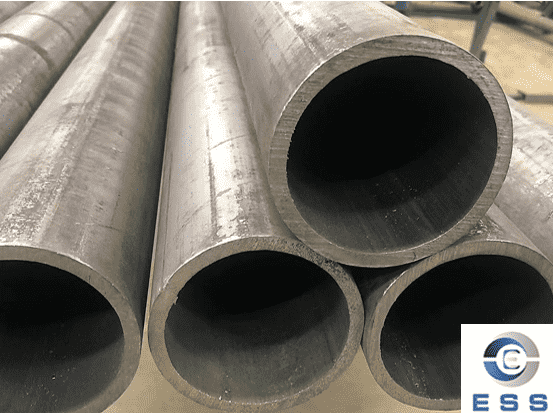Frequently asked questions about stainless steel seamless pipes
The following summarizes some common problems encountered with stainless steel
seamless pipe:
1. Will stainless steel seamless pipes leak?
Stainless steel seamless pipes will not leak when installed correctly.

2. Will stainless steel seamless pipes rust?
Stainless steel seamless pipes are not prone to rust, but they can rust if damaged.
3. Can stainless steel seamless pipes be used for 50 years?
The strength of stainless steel pipes is 3 times that of copper pipes and 8-10 times that of PPR pipes. It can withstand the impact of high-speed water flow of 30 meters per second. You no longer have to worry about being broken by nails, electric drills, etc. Not afraid of heavy objects, wear-resistant, vibration-resistant, impact-resistant, non-explosion, fire-proof, earthquake-resistant, and good sealing performance. Therefore, 50 years is only a conservative estimate, and the building can be maintained and updated during its life cycle.
4. Will temperature affect service life?
Due to the problem of the material itself, PPR pipes will cause problems such as pipe bursting and leakage when the water pipes alternate between hot and cold. However, temperature has no effect on the stainless steel seamless pipe material itself, so it will not affect the service life of the stainless steel seamless pipes.
5. Will work pressure affect service life?
If the water flow of the PPR pipe is too large during operation, it will affect the overall service life of the pipe; the working pressure of thin-walled stainless steel seamless pipes can reach 2.5Mpa (while the tap water pressure is only 0.3-0.6Mpa), so the working pressure will not affect its use life.
6. Does the raw material matter?
The quality of water pipes mainly depends on materials, processes and testing methods, and materials are the top priority. Pressed stainless steel pipe fittings embody the advanced operating technology of high-tech products and a perfect system engineering: pipe fittings, water pipes, rubber rings, and various tools all achieve considerable precision. Practice has proven that the compression pipe fitting system is healthier, more advanced, more durable and stronger than traditional products, and has the characteristics of no leakage under destructive experimental conditions.
7. Is professional installation so important?
Given 100% perfect car parts, can you assemble a 100% perfect car? Water pipes are a systematic project, including pipes and pipe fittings, as well as reasonable design, layout, and technical installation skills. Professional-level installation services ensure system reliability.
8. Embedded wall laying or buried laying
Generally, decoration companies will recommend that owners choose to install water pipes from the ceiling, because if the water pipes burst or leak if they are laid underground, the losses are unpredictable. Even if PPR water pipes are installed in the ceiling, the hot and cold water pipes will still alternate. Burst pipes and water leaks can occur. Whether stainless steel seamless pipes are laid in the wall or buried underground, they will not cause pipe bursts or leaks, let alone the problems caused by PPR when hot and cold alternate, so the "accidents" that owners are concerned about are reduced during installation. question.
9. Can the quality of pipes be judged by hitting them with a hammer?
Consumers may simply hit the pipe with a hammer to see if it breaks. PPR pipes will not be easily cracked in summer. In winter, the high-temperature properties of PPR pipes make them inevitably low-temperature brittle, and the probability of cracking with a hammer is very high. stainless steel seamless pipes can be struck with a hammer or nails during use, and there will still be no cracks. Not affected by summer or winter, the water pipes remain in a consistent state.
10. Why do thin-walled stainless steel seamless pipes use 304 instead of 201?
This is determined by the environment in which thin-walled stainless steel seamless pipes are located. Decorative pipes made of 201 stainless steel (1Cr17Mn6Ni5N) are suitable for dry environments, as long as they do not corrode in dry environments; while water supply pipes are located in humid environments. , the materials in contact are complex, if 201 material is used, corrosion and rust will occur quickly. For example, in humid marine climates, 316L stainless steel should be used.
Stainless steel seamless pipes are used in homes, industries, buildings, commerce, etc., so what are the connection methods of stainless steel seamless pipes? Different connection methods have their own characteristics and scope of application. Let’s take a look at how the commonly used connection methods are connected.
Snap-on connection
Pressure connection is an efficient and reliable connection method, which is widely used in the field of stainless steel seamless pipes. Its main principle is to use radial shrinkage external force to clamp the pipe fittings on the pipe, and realize the connection through the water-stopping effect of the O-ring seal. This connection method has the advantages of easy operation, good sealing, and non-detachable.
When performing a clamping connection, a special clamping tool is required to fix the fittings and pipes together. During the clamping process, the clamping die of the pipe fitting will clamp the pipe tightly, so that a certain compression force is formed between the pipe fitting and the pipe. At the same time, the O-ring is compressed and produces a certain elastic deformation, which acts as a water stop.
The advantage of the compression connection is that it is easy and fast to operate. It does not require special welding equipment or technical requirements, and ordinary workers can complete the operation. At the same time, the compression-type connection has excellent sealing performance, which can effectively prevent water leakage and leakage, ensuring the normal operation of the pipeline system. In addition, the press-type connection is non-detachable. Once the connection is completed, the pipe fittings and the pipe are tightly combined and will not easily loosen or fall off.
Welded connection
Welded connection is a common connection method, suitable for connecting pipe fittings of various metal materials, including stainless steel seamless pipes. This connection method aligns the welding grooves of the two pipe fittings, and then uses welding equipment and corresponding welding processes to connect. When making a welded connection, the welding grooves of the two pipe fittings need to be machined into a suitable shape so that they can be closely aligned.
The commonly used welding process generally uses argon arc welding. Depending on the material and thickness of the pipe fitting, as well as the required connection strength, the appropriate welding process and welding parameters can be selected.
The advantage of welded connection is that it has high connection strength and can meet the requirements of various high-strength and high-pressure pipeline systems. At the same time, the welded connection has better sealing performance and can effectively prevent water leakage and leakage. In addition, the welded connection can be adjusted and repaired as needed, giving it greater flexibility and adaptability. At the same time, welded connections require the use of specialized welding equipment and welding materials, which have higher labor costs and require corresponding welding skills and experience.
Grooved connection
It is a reliable connection method and is widely used in the connection of pipeline systems. This connection method realizes the connection of two pipe fittings by pressing grooves at the pipe ends, then inserting the pipe fittings into the grooves, and finally fixing them together with bolts.
When making grooved connections, special groove processing equipment and tools need to be used to process appropriate grooves on the pipe ports. Commonly used groove shapes include rectangular, circular, etc. Choose the appropriate groove shape and size according to different pipe fittings and connection requirements. The finished groove should be kept flat and smooth so that the pipe fitting can be inserted smoothly.
At the same time, the stainless steel grooved connection method has unique flexibility and can prevent vibration isolation, shrinkage and expansion of the pipeline. During the grooved connection, the inner wall structure of the pipe is not affected at all. If the pipe needs repair or replacement, the two clamps can be loosened and the pipe parts can be freely replaced, rotated or replaced. Maintenance time and maintenance costs are greatly reduced.
Threaded connection
The threaded type uses stainless steel pipe fittings and stainless steel pipes to be tightened directly like screws, and the inner and outer interfaces are tightened with tapered pipe threads. Easy to operate, fast and highly reliable. Threaded connections require the pipe to be processed into a pipe with internal or external threads. Internal threads are usually threaded on the inside of the pipe, while external threads are threaded on the outside of the pipe. Special thread processing equipment and tools are required during processing to ensure the accuracy and quality of the threads. Screw fittings with corresponding threads onto the pipe. During the tightening process, appropriate torque needs to be used to ensure a tight and stable connection between the fittings and the pipe. At the same time, regular inspection and maintenance are also required to ensure the reliability and stability of the connection.
The advantage of threaded connection is that it is easy and fast to operate. It does not require special welding equipment or technical requirements, and ordinary workers can complete the operation. At the same time, the threaded connection has better sealing performance and can effectively prevent water leakage and leakage. In addition, the threaded connection is detachable for easy repair and replacement.
Flange connection
The flange connection is to connect two flanged connecting pipe fittings by tightening the bolts. The flange connection achieves the connection effect through the sealing of the flat seal. It has the characteristics of easy disassembly, good sealing performance, and can effectively prevent water leakage and leakage.
The above are the most commonly used stainless steel seamless pipe connection methods. You can choose appropriate pipes and fittings according to actual needs and occasions. We can also provide customized stainless steel pipe fitting products and solutions according to customer needs to meet customers' different application needs.
Read more: Seamless Steel Pipe Sizes













 Eastern Steel Manufacturing Co.,Ltd not only improve product production and sales services, but also provide additional value-added services. As long as you need, we can complete your specific needs together.
Eastern Steel Manufacturing Co.,Ltd not only improve product production and sales services, but also provide additional value-added services. As long as you need, we can complete your specific needs together.










